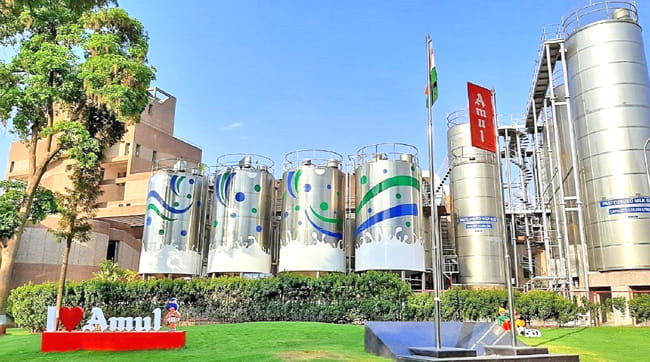The Amul Way: A Journey of India’s Dairy Revolution

“The sapling that was collectively planted by the villages of Gujarat 50 years ago has now grown into a magnificent banyan tree. Today, the branches of this colossal banyan tree have extended across the nation and abroad”. This is what Prime Minister Narendra Modi said while participating at the Golden Jubilee of Gujarat Coop Milk Marketing Federation (GCMMF) recently. GCMMF is the cooperative giant that owns the iconic dairy brand – Amul.
A year before India attained independence, in the heartlands of Gujarat, a revolution was born, which started as a small-scale protest against unfair trade practices of Polson dairy and turned into a monumental movement that reshaped India’s dairy landscape. The farmers of Kaira (now Kheda) district formed a cooperative – the Kaira District Co-operative Milk Producers Union Ltd. under the guidance of Sardar Vallabhbhai Patel.
In 1965, the National Dairy Development Board (NDDB) was set up with the basic objective of replicating the Amul model, which was followed by establishment of GCMMF in 1973, under the leadership of Dr. Verghese Kurien, a.k.a the Milk Man of India. GCMMF emerged as the apex organization of Gujarat’s dairy cooperatives, with a mission to provide remunerative returns to farmers and quality products to consumers. The cooperative movement, started in Gujarat became a model not only for India, but for developing countries throughout the world.
In 1970, the cooperative spearheaded the “White Revolution” which eventually catapulted India to become the largest producer of milk in the world. The driving force behind the unprecedented growth of India’s dairy sector, with a turnover of Rs 10 trillion, is the nation’s women workforce. The remarkable success attained by Amul today is largely attributed to this female workforce participation.
Amul is the inspiration of Atmanirbhar Bharat. Amul products are exported to more than 50 countries around the world. Supported by a vast network of over 18,000 milk cooperative committees and 36,000 farmers, Amul processes more than 3.5 crore litres of milk per day.
At the core of this model lies a three-tier cooperative structure. Village-level dairy societies collect milk from local farmers. These societies, in turn, supply the milk to district-level milk unions. Finally, the state-level milk federations consolidate the supply and distribute it to various markets. Farmers are offered fair prices for their milk, and consumers receive fresh, unadulterated products. By decentralizing operations and involving local communities, Amul not only ensures a steady supply chain but also strengthens rural economies.
Today, Amul is the largest FMCG brand in India posting annual sales turnover of Rs 72,000 crores during FY 2022-23. The UK based Brand Finance in its ‘Brand Finance Food & Drinks Report 2023’ has ranked Amul as not only the world’s strongest dairy brand globally, but also the second strongest food brand worldwide, only behind American chocolate brand Hershey’s.
At the heart of Amul marketing strategy is the umbrella approach, where the Amul Girl serves as a unifying thread. By using a consistent nomenclature across its product range, Amul has simplified marketing efforts and streamlined cost management.
Also of great significance is Amul’s communication strategy. Introduced in 1966 by Sylvester daCunha, the Amul moppet’s witty, relatable advertisements have transcended generations, earning a place in the Guinness Book of World Records for the longest-running campaign. The butter girl was so appreciated that a British company launched a butter and named it Utterly Butterly in 2019. The witty billboards and print ads featuring the Amul Girl, commenting on everything from politics to pop culture, have been successful in keeping the brand alive in public discourse.
As GCMMF celebrates its golden jubilee, it’s not just a milestone for the organization but a triumph for millions of dairy farmers whose lives have been transformed for better. The journey of Amul is truly a great example of balance between cooperatives and government, showcasing what can be achieved when communities come together with a shared purpose. The government is making record investments in modernizing infrastructure related to animal husbandry, with a special fund of Rs 30 thousand crore established for this purpose.
Today, Amul brand is not only a product, but also a movement. It is in one way, the representation of the economic freedom of farmers. It has given farmers the courage to dream. To hope. To live.
